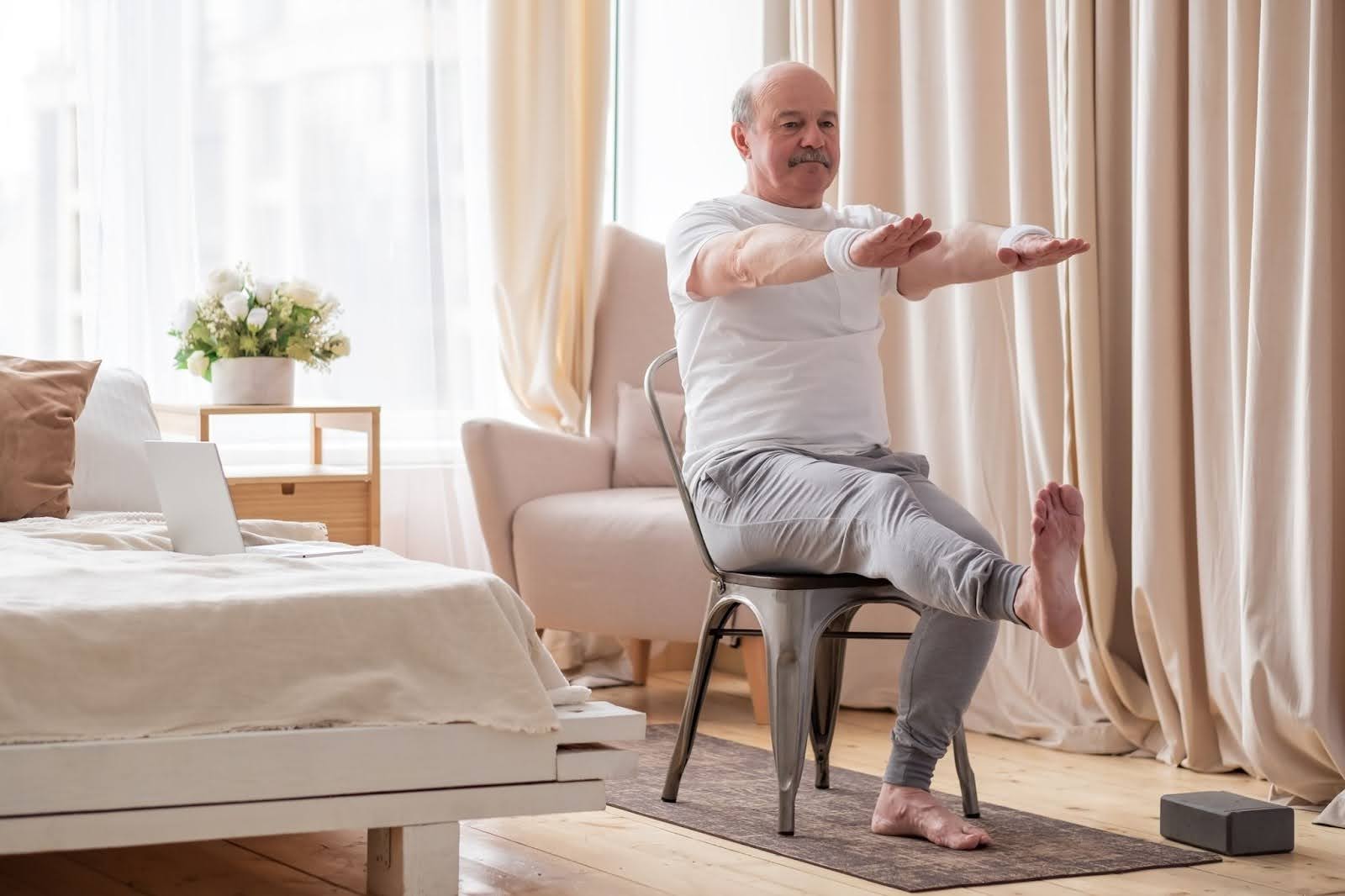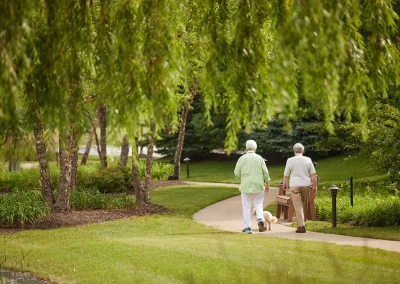Knee replacement surgery can be life-changing, offering relief from chronic pain and restoring mobility. For most seniors—typically between the ages of 65 and 70—this procedure improves their quality of life by allowing them to stay active and independent.
However, to fully enjoy these benefits, incorporating a structured exercise routine after knee replacement is essential. Engaging in the right exercises after a knee replacement helps reduce swelling, improve flexibility, and rebuild strength, ensuring long-term recovery and enhanced mobility.
Why Exercise Is Important After Knee Replacement
Staying active is essential for a smooth and successful recovery after knee replacement surgery. Incorporating the right exercises helps rebuild strength, restore mobility, and ensure long-term benefits.
- Promotes Healing: Exercise boosts blood circulation, reducing swelling and stiffness while promoting tissue healing. Gentle movements prevent scar tissue and maintain knee flexibility.
- Restores Mobility: Strengthening the muscles around the knee, especially the quads and hamstrings, improves range of motion and makes daily activities easier.
- Improves Strength, Balance, and Flexibility: Stronger leg and core muscles enhance balance and stability, reducing fall risk. Flexibility exercises keep the knee joint moving smoothly, preventing stiffness.
- Helps Long-Term Recovery: Staying active supports heart health, maintains muscle tone, and ensures lasting improvements in mobility and longevity.
Guidelines for Exercising After Knee Replacement
Following a safe and structured exercise plan after knee replacement ensures steady progress without risking injury. These guidelines help maximize recovery and prevent setbacks.
- Start Slowly: Begin with gentle, low-impact exercises and gradually increase intensity. Rushing can lead to setbacks.
- Focus on Low-Impact Movements: Opt for activities like walking, cycling, and water exercises to strengthen muscles without stressing the knee.
- Be Consistent: A regular routine prevents regression and promotes continuous progress.
- Listen to Your Body: Watch for signs of overexertion, such as persistent pain or swelling, and modify exercises as needed.
Types of Exercises After Knee Replacement
A phased approach to exercise after surgery helps the body adapt, regain strength, and improve flexibility over time. The following exercises support recovery at different stages:
Early Recovery (Weeks 1–3)
These gentle movements focus on improving circulation, reducing swelling, and restoring initial flexibility.
- Ankle Pumps: Improves circulation and reduces swelling.
- Lie down with your leg extended.
- Point your toes downward (as if pressing on a gas pedal), then flex them upward toward your body.
- Continue this motion for 1–2 minutes to stimulate blood flow and prevent clotting.
- Heel Slides: Improves flexibility and range of motion.
- Lie on your back with your legs extended.
- Bend your knee, sliding your heel toward your body.
- Hold briefly, then straighten your leg. Repeat 10–15 times to improve knee flexibility.
- Quadriceps Sets: Strengthens the quads for knee stability.
- Sit or lie flat with your leg extended.
- Tighten the muscles on the front of your thigh (as if pressing the back of your knee into the floor).
- Hold for 5–10 seconds, then relax. Repeat 10–15 times to build strength and improve knee control.
Intermediate Recovery (Weeks 4–6)
These exercises focus on building strength and improving knee mobility.
- Straight Leg Raises: Builds quads and improves knee control.
- Lie flat on your back with your unoperated leg bent and the operated leg straight.
- Tighten your thigh muscles and lift your straight leg a few inches off the ground.
- Hold for 5 seconds, then slowly lower. Repeat 10–15 times to enhance strength.
- Seated Knee Bends: Improves range of motion.
- Sit comfortably in a chair with your feet flat on the ground.
- Slowly slide your operated foot backward to bend your knee, then slide it forward to straighten.
- Repeat 10–15 times to enhance knee flexibility.
- Calf Raises: Strengthens calves and improves overall leg strength.
- Stand with your hands on a sturdy surface for balance.
- Rise onto your toes as high as possible, hold for a second, and then slowly lower back down.
- Repeat 10–15 times to strengthen your lower legs and support balance.
Advanced Recovery (Weeks 7+)
These advanced exercises enhance strength, mobility, and cardiovascular endurance.
- Stationary Cycling: Strengthens leg muscles and improves mobility.
- Use a stationary bike with low resistance to start.
- Pedal slowly and comfortably, gradually increasing intensity as tolerated.
- This low-impact exercise helps strengthen the quads, hamstrings, and calves while improving joint flexibility.
- Standing Knee Bends: Enhances flexibility and strength.
- Stand with support from a chair or countertop.
- Bend your knee as far as possible, bringing your heel toward the back of your thigh.
- Hold the position for a few seconds and slowly straighten your leg.
- Repeat 10–15 times to build strength and flexibility.
- Walking: Boosts cardiovascular health and endurance.
- Walk at a comfortable pace, gradually increasing both distance and speed as you gain strength and confidence.
- Walking improves circulation, strengthens muscles, and promotes long-term joint health.
Recovery Tips
Maximizing your recovery goes beyond exercise. Following these essential tips will help support your body and ensure optimal healing after knee replacement.
- Monitor Pain Levels: Adjust intensity if pain or swelling increases.
- Stay Hydrated: Hydration supports tissue healing and prevents fatigue.
- Eat Nutritious Foods: A diet rich in vitamins, minerals, and protein supports muscle recovery.
- Use Assistive Devices as Needed: Walkers or canes provide extra stability during recovery.
When to Seek Professional Advice
Knowing when to seek professional advice can prevent complications and ensure safe, steady progress. Pay attention to these warning signs during recovery.
- Persistent Pain: Consult a healthcare provider if pain worsens or doesn’t improve.
- Difficulty with Exercises: Seek guidance if exercises feel difficult or if you’re unsure about progress.
Sedgebrook’s Active Lifestyle and Supportive Care
At Sedgebrook, we take a well-rounded approach to recovery to support both physical and emotional well-being. Our residents benefit from a combination of personalized exercise programs, social activities, and expert care to help them thrive during their recovery journey.
- Tailored Exercise Programs: At Sedgebrook, residents benefit from personalized exercise programs designed to help them regain strength, mobility, and independence. These programs are carefully crafted by professional trainers and therapists, offering the right guidance at every stage of recovery.
- Social Activities and Emotional Support: Staying active extends beyond physical health—it’s also about emotional well-being. Sedgebrook fosters a vibrant social environment where residents can engage in group activities, connect with peers, and stay motivated throughout their recovery journey.
- Expert Care: Sedgebrook’s healthcare team offers ongoing support, ensuring that residents feel confident in their recovery. From physical therapy to wellness programs, seniors receive expert care and encouragement to maintain an active and fulfilling lifestyle.
Embrace Recovery and Thrive at Sedgebrook
Recovering from knee replacement surgery takes time and dedication, but with the right exercise routine, seniors can enjoy long-lasting benefits. By staying active, monitoring progress, and seeking expert care when needed, seniors can enhance their strength, mobility, and overall well-being.
Experience the vibrant, active lifestyle and personalized care at Sedgebrook, where your well-being is our priority. Schedule a visit today and see how our community can help you thrive with support, wellness, and endless opportunities for a fulfilling life.






